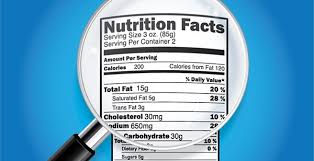
In today’s world of packaged goods and supermarket aisles, food labels are treated like nutritional gospel. Calories, protein grams, vitamins, minerals—presented as precise measurements, suggesting confidence and accuracy. But here’s the truth: those numbers are estimates at best, and in many cases, they don’t tell the whole story.
The biggest reason? Nutrients don’t come from factories—they come from the soil, the water, and the sun.
Nutrients Begin in the Soil
Whether it’s a carrot or a cow, the nutritional value of food is directly tied to where and how it was grown or raised. The vitamin and mineral content of plant foods depends entirely on the nutrient makeup of the soil they grow in. Depleted soil means depleted food—regardless of what the label claims.
For example, spinach grown in one field might contain 50% more iron than spinach from another field just a few miles away. Yet, both bags on a shelf will display the same USDA nutrient panel—based on average estimates, not actual testing of that specific crop.
Labels Don’t Measure the Ecosystem
Animals raised on nutrient-rich pasture soil, exposed to sunlight, and rotating through regenerative systems produce superior meat, dairy, and eggs. Their nutrient profiles (especially omega-3s, fat-soluble vitamins like A and K2, and CLA) differ dramatically from animals raised on grain in confined systems.
Yet, both types of meat may be labeled with the same “grams of protein” or “milligrams of iron”—ignoring the bioavailability, density, and diversity of nutrients that real-world ecosystems provide.
Most Labels Are Based on Averages from the 1960s
The USDA food composition database, which informs most food labels, is built from decades-old data and averages. It doesn’t account for modern farming practices, soil degradation, seed hybridization, or regional variability. Nor does it factor in storage conditions, time-to-market, or how processing and cooking alter nutrient content.
In one landmark study, researchers found that the nutrient content of 43 crops had declined significantly between 1950 and 1999—yet food labels haven’t adjusted to reflect that loss【1】.
“Natural” and “Organic” Still Leave Questions
Even labels like “natural,” “organic,” or “grass-fed” don’t guarantee high nutrient density. Organic crops can still be grown in poor soil. Grass-fed cattle might still graze on overgrazed or nutrient-poor land. Unless you know the quality of the land, the health of the animals, and the regenerative integrity of the farm, the label is just a rough sketch.
Micronutrients Are Often Missing Entirely
Food labels focus primarily on calories, macronutrients, and a few selected vitamins and minerals. But dozens of other phytonutrients, enzymes, co-factors, and antioxidants play a critical role in human health—and they’re never listed. Many of these are influenced by things like sunlight exposure, plant stress, and soil biology, which vary from farm to farm and are never captured in a barcode.
So What Can You Trust?
Not all food is created equal. Labels can serve as a general guide, but if you truly care about nutrient density, you have to look beyond the numbers:
- Know your farmer or food source
- Understand the soil—regenerative practices matter
- Choose local and in-season whenever possible
- Prioritize how food is grown, not just what is grown
Real health comes from real food grown in real soil—not from a standardized label.
Citations
- Davis, D. R., Epp, M. D., & Riordan, H. D. (2004). Changes in USDA food composition data for 43 garden crops, 1950 to 1999. Journal of the American College of Nutrition, 23(6), 669–682.
https://doi.org/10.1080/07315724.2004.10719409 - Montgomery, D. R., & Biklé, A. (2016). The Hidden Half of Nature: The Microbial Roots of Life and Health. W. W. Norton & Company.
- DiNicolantonio, J. J., O’Keefe, J. H., & Lucan, S. C. (2018). Nutritional deficiencies in modern soil and food: Implications for chronic disease. Progress in Cardiovascular Diseases, 61(1), 54–57.
https://doi.org/10.1016/j.pcad.2018.01.003 - Bionutrient Food Association. (2020). Variability of nutrient content in carrots, spinach, and other crops.
https://bionutrient.org
Leave a Reply